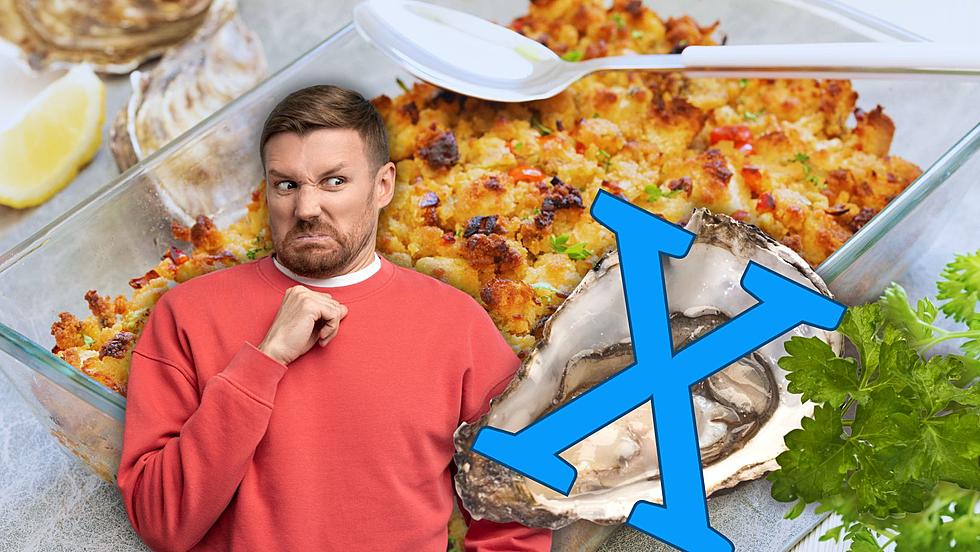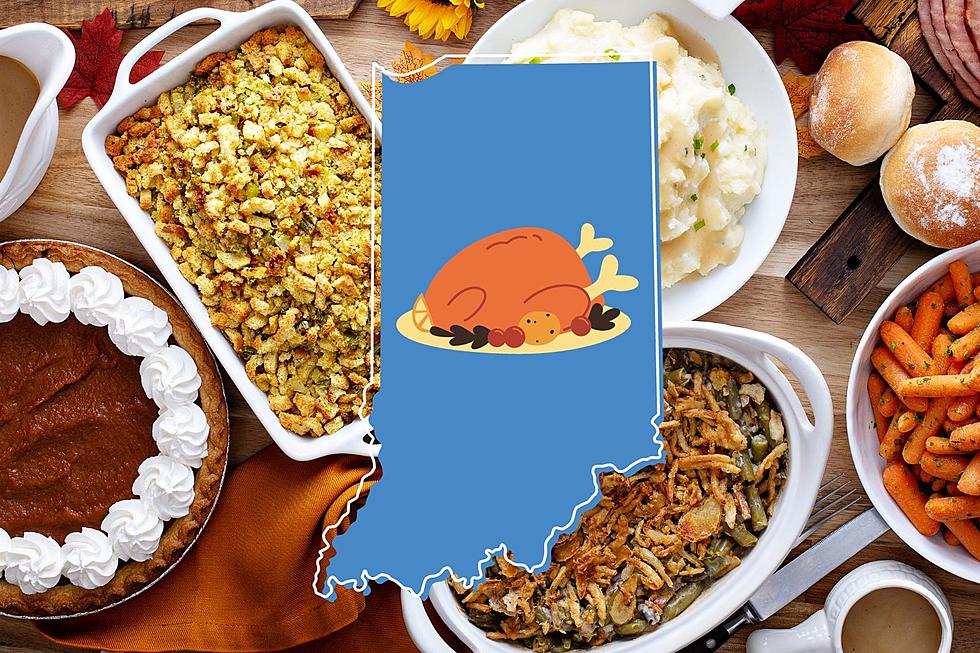
What Do You Think About This Polarizing Thanksgiving Dish that Grosses Some KY Folks Out?
Yesterday on the Morning Show, we chatted about Thanksgiving foods folks do NOT like. Some of the answers I couldn't believe! Way too many people don't like cranberry sauce or sweet potatoes! And how can someone not eat turkey on "Turkey Day?" I guess if it's dryer than the Sahara I could understand.
My answer to the question "For Thanksgiving, don't you put no _____ on my plate," was echoed by quite a few people in our Facebook poll. You will never find me eating Oyster Dressing unless it's on accident!
My grandpa loved it so much that I remember him even putting extra oysters on top. My mom loves it too, so my dad usually made a tiny baking dish of special dressing just for her. I pride myself on not saying "no" to things I have never tried before, so one year when my dad told me to try it, I was like "Why not?" Well, I couldn't even swallow it it was so gross!

It tasted like regular dressing but had a hint of seafood and disgusting chewy blobs of fishy "bubblegum' in it. I could gag just thinking about it. I said, "Dad, why did you do that to me?" He said, "You put the fork in your mouth! I think it's nasty too!"
I started to wonder why in the world people decided to add oysters to perfectly delicious turkey dressing.
The History of Oyster Dressing
According to whatscookinamerica.net "The tradition of oyster dressing was brought over from British colonists that settled in America." However, the first recorded recipe involving oysters in a stuffing-type recipe was back in 1685 in "The Accomplisht Cook, London, Sauce with Oysters and Bacon, The oysters were cooked and mixed with spices and herbs stuffed in the pullets belly and roasted." Oysters were in abundance centuries ago, easily accessible, and an inexpensive protein to add to various dishes for working-class families.
New England to Cincinnati
Mainly a New England dish, it later gained popularity in Kentucky in the 1800s thanks to neighboring Cincinnati, Ohio's "Oyster Boom." Cincinnati Magazine ran a really interesting article about this dining trend that brought shellfish to the Midwest.
"Cincinnati diners consumed some 200,000 gallons of fresh oysters every season, shipped in the shell on ice from the east coast. That works out to something like 2.5 million oysters per year. The volume is remarkably consistent between reports in 1852 and in 1888. In the 1880s, 30 Cincinnati businesses either packed or served oysters."
Oyster Dressing Recipe Stands Test of Time
In 1880 Miss Parloa’s New Cook Book and Marketing Guide by Maria Parloa was published with the following recipe that is more like the dressing we know today.
"Boiled Turkey – Chop half a head of celery very fine. Mix with it one quart of bread crumbs, two scant table-spoonfuls of salt, half a teaspoonful of pepper, two heaping table-spoonfuls of butter and two eggs. Stuff the turkey with this; sew up and truss. The stuffing may be made the same as above, only substitute oysters for celery, and serve with oyster sauce.”
Over the next century, the recipe has been passed down and tweaked to incorporate other vegetables or herbs and spices. Southerners along the coast have a rich history of adding oysters to their stuffing as well. Now everyone from Betty Crocker to Paula Deen to Pioneer Woman has their own version of Oyster Dressing. If you want to try it, more power to ya! Just don't worry about saving any for me. Does this centuries-old dish grace your Thanksgiving table? Let us know on the WBKR App chat. Happy Thanksgiving!
LOOK: 20 American foods that raise eyebrows outside of the US
Gallery Credit: Charlotte Barnett
More From WBKR-FM









